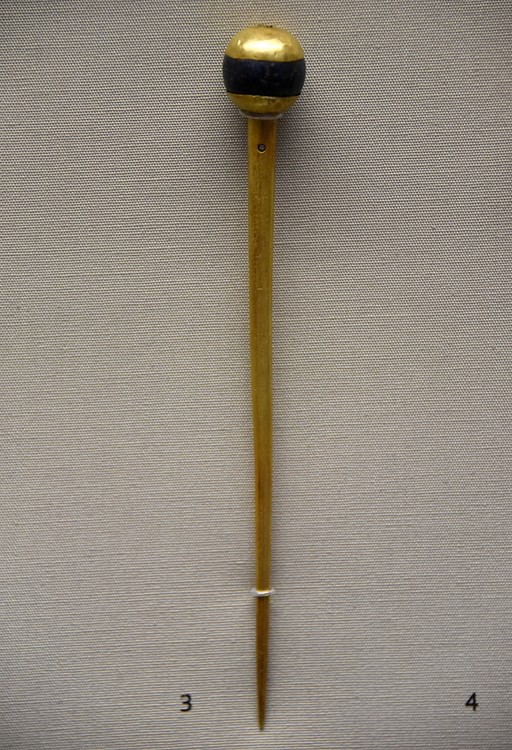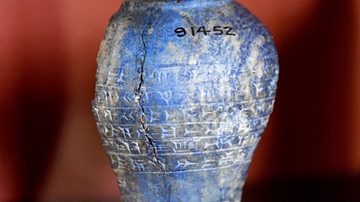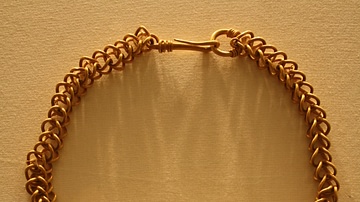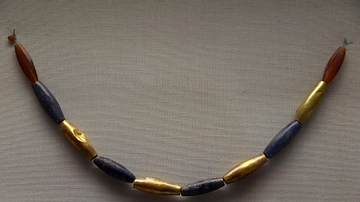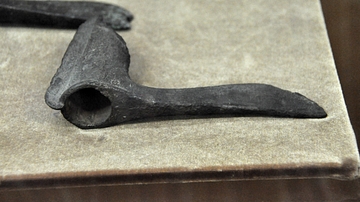Illustration
This gold toggle was found with the body of Puabi herself inside her grave, by her upper left arm. Puabi was a Semitic Akkadian woman from Ur, c. 2600 BCE, possibly a queen or priestess. The lapis lazuli head was carved, perforated, and polished, and it was overlaid with two gold caps. This pin must have helped secure her cloak. A cylinder seal was found attached to this toggle. Early Dynastic Period, circa 2600 BCE. From the Royal Cemetery at Ur, Southern Mesopotamia, modern-day Iraq. Part of objects allotted to the British Museum from Ur excavation season 1927-1928 CE. (The British Museum, London).
Cite This Work
APA Style
Amin, O. S. M. (2018, February 23). Gold and Lapiz Lazuli Pin of Puabi, Ur. World History Encyclopedia. Retrieved from https://www.worldhistory.org/image/8107/gold-and-lapiz-lazuli-pin-of-puabi-ur/
Chicago Style
Amin, Osama Shukir Muhammed. "Gold and Lapiz Lazuli Pin of Puabi, Ur." World History Encyclopedia. Last modified February 23, 2018. https://www.worldhistory.org/image/8107/gold-and-lapiz-lazuli-pin-of-puabi-ur/.
MLA Style
Amin, Osama Shukir Muhammed. "Gold and Lapiz Lazuli Pin of Puabi, Ur." World History Encyclopedia. World History Encyclopedia, 23 Feb 2018. Web. 24 Apr 2024.
